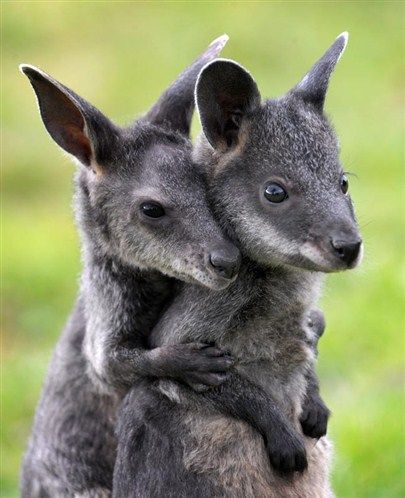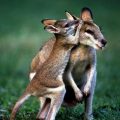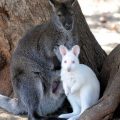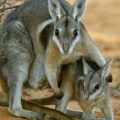Table of Contents
Both kangaroos and wallabies are marsupials, meaning they carry their young in their pouch. Both also belong to a minor number of animals referred as macropods – or plant eating marsupials. The word ‘macropod’ actually means ‘big foot’, hence, the larger and more powerful hind legs, and larger feet, as well as long and muscular tails for balance. Both animals are also only naturally found in Australia and Papua New Guinea. They’re more active at dusk, night, and dawn. And unlike other marsupials like koalas and wombats, kangaroos and wallabies have forward-opening pouches.
Where They Live
Both animals live about everywhere in Australia, but each of their specie has their preferred environment suited for their characteristics.
Red kangaroos for example, prefer the open and flat plains. Grey kangaroos may overlap them in their environment, but they prefer living in the forests or anywhere with denser vegetation. Tree kangaroos (two of its species live in Australia) are usually found in the mountain rainforests of north Queensland.
Wallaroos on the other hand, have quite a widespread range in the inland; however; they are more commonly found in the stony grounds or rocky outcrops.
Rock wallabies love to stay in cliffs, piles of boulders and rocky hills. Smaller wallaby species on the other hand, live in various habitats, from deserts, forests to woodlands.
Their Diet
As said earlier, both are plant-eating animals or better known as herbivores. Most of their diet consist grass, leaves, ferns, herbs, fruits and even flowering plants. Kangaroos can eat insects, and like cows.
As with many marsupials, if not all, both kangaroos and wallabies regurgitate their food; and re-chew it later before it’s totally digested, very similar to cows.
How Long Do Wallabies and Kangaroos Live?
Wallabies tend to be much more short-lived than their bigger relatives. They can live up between 11 to 15 years in the wild, and slightly shorter in captivity, which is around 10 to 14 years. Kangaroos on the other hand, have an average lifespan of 20 to 25 years in the wild, and 15-20 years in captivity. In some cases, they can survive up to 30 years.
Threats for Survival
Both animals roam around Australia and are practically unchallenged by any predators; although carnivorous marsupials as well as Tasmanian tigers have always been threats to their survival. As with any other species, the peopling of Australia, particularly the arrival of Indigenous people around 40,000 to 60,000 years ago had a significant impact on both animals’ numbers in the wild; as they were continuously hunted, while their habitat have been frequently burned down for farming, cattle raising and human occupation. The arrival of dingo, or the Australian wild dog in around 3,500 years ago, has become their number one predator.
Also, the arrival of European settlers in Australia had the most significant effect on the native animals in the country, particularly the kangaroos. Kangaroos compete with European livestock for pasture, and Europeans introduced various predators such as foxes and even domesticated animals such as dogs and cats, have pushed them towards the inlands.
Some species of both wallabies and kangaroos have gone extinct; while others have become endangered, while many are considered vulnerable, meaning their specie is facing a high risk for extinction in the wild.






 Author and long-time animal lover. Sharing knowledge on pet care through experience and the written word.
Author and long-time animal lover. Sharing knowledge on pet care through experience and the written word.